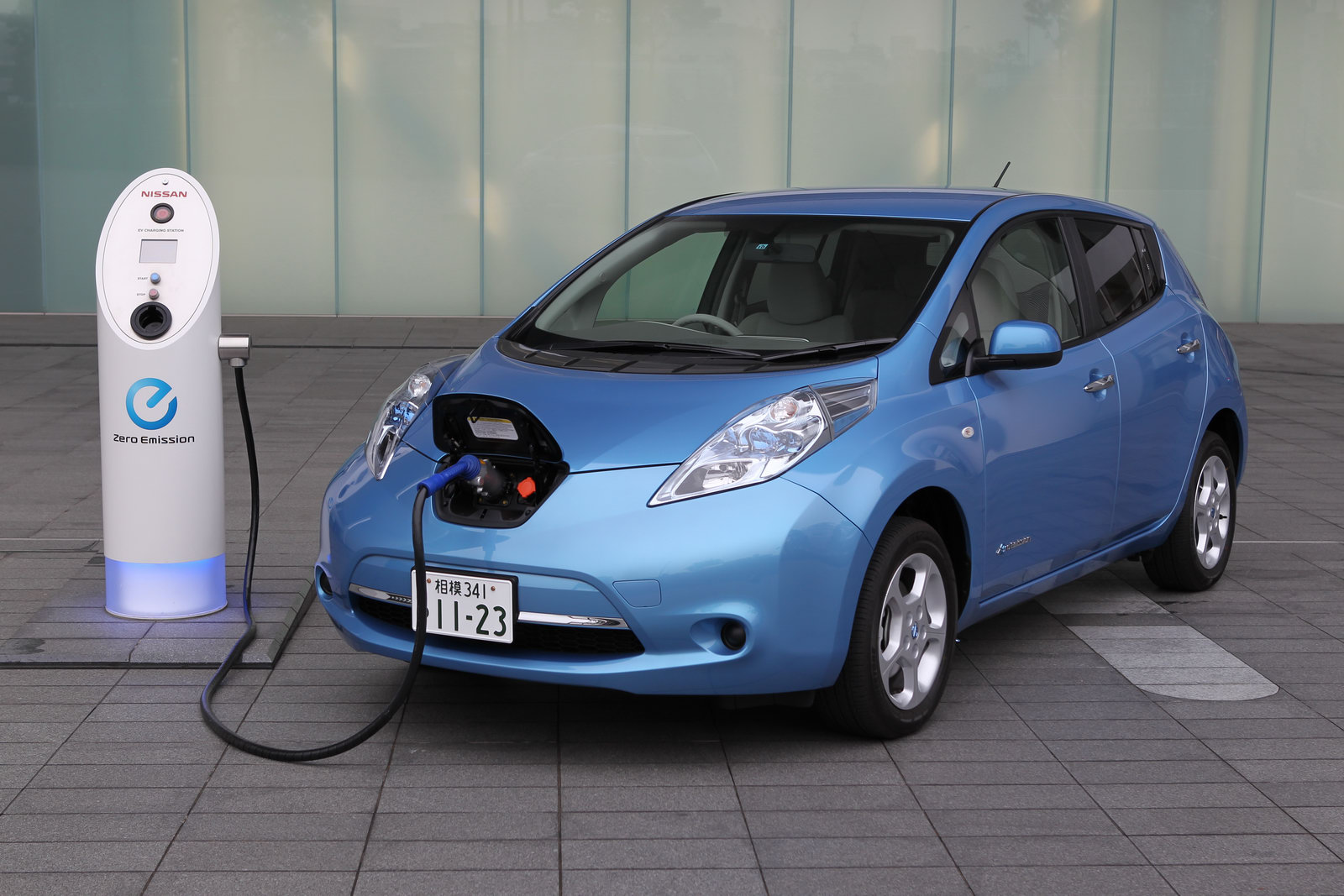Viewing entries in
Uncategorized
 Just stumbled across this fabulous post about the Tesla Model S, written by the author of The Oatmeal.
Just stumbled across this fabulous post about the Tesla Model S, written by the author of The Oatmeal.
Elon Musk didn't just build a great electric car - he built the world's greatest car, which happens to be electric. And he did it 10-15 years before people thought it would be possible. Something to think about.
Recently I was invited to speak on a Princeton sustainability panel about my budding startup, Comet Motorcycles. Comet designs and produces small runs of electric motorcycles.

Normally, Comet does not emphasize the eco-friendly side of electric power - we aim to produce the best motorcycles possible, which happen to be electric. However, seeing as this was a sustainability panel, I decided to bring up some points why gas motorcycles are so much more pollutive than people realize - even more pollutive than gas-powered cars! (at least in terms of non-CO2 output). Anyway, I was going over some of the common value propositions of EVs - zero engine vibrations, reduced heat output, and increased energy efficiency compared to an equivalent gas vehicle (which are typically about 17-21% efficient at converting the gas in their tanks into useful energy). At this point, I was interrupted by an audience member who started shaking his head and loudly repeating "That's not true, that's not true! Electricity from the grid is only 33% efficient!"
To flat-out cut off a panel speaker as an audience member, you must be pretty convinced you have a really important, undebatable point. As we shall see, the efficiency of EVs isn't quite that clear-cut, but it's definitely worth addressing if you're going to claim one way or the other. After all, you have to plug your EV into the grid, right? And getting the energy from that grid - which generates its supply of power using ancient coal plants - to run your vehicle can't possibly be more efficient than burning gasoline in an onboard internal combustion engine, right?
And getting the energy from that grid - which generates its supply of power using ancient coal plants - to run your vehicle can't possibly be more efficient than burning gasoline in an onboard internal combustion engine, right?
Wrong.
To understand this question of EV efficiency, we need to decide what we mean by "efficiency". There are three such concepts that I'll deal with here:
"Tank-to-wheel efficiency" - as the name implies, this is how efficient the vehicle is at taking energy stored onboard and turning it into useable motion.
"Infrastructure efficiency" - this describes how efficiently we can take energy from the "source" (the ground, the well, a chunk of uranium, the sun, the tides, what have you) and put it into your tank. Refineries, power plants, chargers, relays, ports, ships that carry barrels of crude oil across the Gulf - this is a big category for the refining and distribution of automotive-grade gasoline, as well as the generation and transfer of electric power using various source fuels (coal, LNG, solar, tidal, nuclear, etc.). This is also extremely difficult to estimate and you have to view the efficiency of different fuels in terms of opportunity cost and scale - that's a topic for a different post, so we'll just use worst-case estimates for now to get a lower-bound estimate of the efficiency of EVs over internal combustion vehicles.
Refineries, power plants, chargers, relays, ports, ships that carry barrels of crude oil across the Gulf - this is a big category for the refining and distribution of automotive-grade gasoline, as well as the generation and transfer of electric power using various source fuels (coal, LNG, solar, tidal, nuclear, etc.). This is also extremely difficult to estimate and you have to view the efficiency of different fuels in terms of opportunity cost and scale - that's a topic for a different post, so we'll just use worst-case estimates for now to get a lower-bound estimate of the efficiency of EVs over internal combustion vehicles.
"Well-to-wheel efficiency" - This is a measure of how much energy from the source fuel ends up as useful energy produced by your vehicle's power plant in the form of motion. By definition, then, this equals Tank-to-wheel efficiency x Infrastructure efficiency, and it's the most relevant, honest and all-encompassing measure of how energy-efficient our vehicle is. (note: To stay within appropriate scope for a blog post I restrict myself to discussing the well-to-wheel energy efficiency of EV vs. gas; I avoid making any claims with reference to the cost or emissions of EV vs. gas)
So first let's talk about the tank-to-wheel of a gas vehicle verses an EV: The EPA estimates that gas vehicles are about 17-21% "tank to wheel" efficient. A Tesla Roadster is about 79% efficient "tank to wheel" (88% chemical storage and conversion, 90% driveline efficient). Here's the point at which most Tesla drivers declare victory and zoom off. Well, we're not done here.
How much energy from the grid's source fuel actually ends up in your Tesla's "tank"? Let's go with the worst case scenario: When you burn coal in an old-generation plant you are able to harvest 30% of the thermal energy originally stored in the coal into electricity (newer IGCC plants can bump this number up to over 60%. However, you then have to transmit and distribute that power to home users over the grid - there you lose about 6% of the energy that you generated. (100%-6%) x 30% = 28.2%. This is how much energy from the coal you burned that you actually get at your house where your Tesla is. The efficiency of Tesla chargers is about 92% according to the manufacturer. You multiply that by 28.2% and you get how much of the coal's original energy ends up in your Tesla's "tank" (battery pack): 92% x 28.2% = approx. 26%. Now you multiply that number by the Tesla's "tank to wheel" efficiency and you get 79% x 26% = 21%.
When you burn coal in an old-generation plant you are able to harvest 30% of the thermal energy originally stored in the coal into electricity (newer IGCC plants can bump this number up to over 60%. However, you then have to transmit and distribute that power to home users over the grid - there you lose about 6% of the energy that you generated. (100%-6%) x 30% = 28.2%. This is how much energy from the coal you burned that you actually get at your house where your Tesla is. The efficiency of Tesla chargers is about 92% according to the manufacturer. You multiply that by 28.2% and you get how much of the coal's original energy ends up in your Tesla's "tank" (battery pack): 92% x 28.2% = approx. 26%. Now you multiply that number by the Tesla's "tank to wheel" efficiency and you get 79% x 26% = 21%.
So what we've calculated is that a Tesla Roadster, running off of the least efficient coal plant you can find in America, is around 21% efficient well-to-wheel. That is - coincidentally - exactly the EPA's upper estimate for the tank-to-wheel efficiency of a gas car.
All the Tesla owners just rage-closed the window, but think about what I just said. A Tesla is as energy-efficient as a gas car, assuming that the refining and distribution of gasoline is 100% energy efficient. But I got news for you. It ain't. Gasoline is actually really hard to refine and distribute. Building crude oil pipelines, lighting up gas stations, making everyone drive to those gas stations to fill up, carrying gas around in big gas trucks, etc. - the infrastructure required to distribute gas is titanic. The refining of gasoline from crude oil alone takes away about 15% of the energy. It's almost impossible to accurately account for all of the other energy-consuming hoops that gasoline has to jump through to get to your gas station and into your tank. So for the sake of being as generous as possible to gas-powered machines, we'll call that efficiency 100%.
Gasoline is actually really hard to refine and distribute. Building crude oil pipelines, lighting up gas stations, making everyone drive to those gas stations to fill up, carrying gas around in big gas trucks, etc. - the infrastructure required to distribute gas is titanic. The refining of gasoline from crude oil alone takes away about 15% of the energy. It's almost impossible to accurately account for all of the other energy-consuming hoops that gasoline has to jump through to get to your gas station and into your tank. So for the sake of being as generous as possible to gas-powered machines, we'll call that efficiency 100%.
Conclusions: We have calculated an extreme lower bound estimate for the added efficiency of an electric car over a highly efficient gas car - 15%. Are electric vehicles 100% efficient? No, not even close. But are gas vehicles as good or better? Definitely not. It takes some calculation and attention to accounting methods that aren't practical to present verbally, but make perfect sense when on paper. This is why you should probably leave the the more arduous arithmetic to the guy with the projector.
Based on what I see around campus, these points aren't common knowledge, but I think they should be. Bike safety/wisdom/etc. takes no effort whatsoever, and yet I still see people wrecking at high speed, getting bikes stolen and falling victim to other preventable things like that. Here are some things you can consider if you're looking to improve your on-campus bicycling experience. 1. Get the right bike for the job. People like the look of fixed-gear road bikes with skinny tires, thin frames and forward handlebars that force you to crane your head over the front wheel. Those low-resistance tires offer very little grip. Thin, lightweight frames and spokes get damaged easily by curbs, or even lumpy sidewalks. Hot Italian designer bikes get stolen first. Buy a comfy, sturdy hybrid bike - they run very cheap (often under $400) and they're usually built like tanks. They're a little heavier than road bikes, but it's all the better for your exercise. Some even have front suspension to smooth out your ride. You're not out to impress anyone with your bike so a solid, reliable machine will save you headaches in the future.
2. Consider a helmet. You may think you don't need a helmet. This could be true for 99.9% of your journeys. However, on that one-in-a-thousand trip when you wreck really bad, you might be glad you took the negligible effort of putting on the helmet. A member of my family spent an extra year and a half in college because of a head injury he got going over his bicycle handlebars. Helmets may not be right for everyone - some people ride very slowly and others claim to have fabulous hair. However, if you're riding faster than you can run, picture yourself crashing in whatever you're wearing. Would you be OK to finish the day's classes?
3. Lights. If you're going to ride on campus in the dark, you want lights - even if you're not mingling with cars. Pedestrians and other bicyclists should able to see you and they may not have your teenage nighttime eyesight. If you live in an area with a lot of desperate thieves, you may consider picking up a set of LED clip-ons that you can easily pop off when you lock up your bike.
4. Never, never override your sight. The number one factor in bicycle crashes on campus is riding too fast (universities don't like publishing the causes of bicycle crashes on their campuses, so you'll just have to trust me here). You don't need to fly around frantically to save time getting to your next class. If you ever find yourself surprised by pathway obstacles, it means you need to slow down. If you're going around a blind corner, always be prepared to stop before you reach the farthest point on your path which you can see. There could be a snake, a baby or a fax machine on the ground in front of you, or there could be someone coming the other way - you just can't know. When you're on crowded campus sidewalks between classes, don't fly downhill just because it's easy - in addition to all that speed you've built on your way down, gravity doesn't want you to stop, so you will likely underestimate your braking distance! Anyone who has biked down the path on the eastern side of the Frist Campus Center will know what I mean. I've seen some badly scarred faces on bicyclists who clobber pedestrians at hill bottoms. Just because speed is easy doesn't make it safe. Keep your eyes up, hands on your brakes.
5. Approach blind corners from the outside. So, for a left-hander in which a building blocks your visibility around the corner, approach on the right side of the sidewalk. This enables you to extend your sight farther down your path of travel. You'll spot oncoming traffic and other obstacles sooner, so you can take the corner faster and safer.
6. Look where you want to go. The human brain is somehow wired to masterfully maneuver a bicycle wherever the eyes are pointed. If you're huffing and puffing your way up a hill, don't look down at the pedals - look up at the crest, and you'll get there all the sooner. Look through the ends of corners so you can react quickly to whatever may appear on your path. If you suddenly spot a killer fax machine after entering a corner too hot, don't target fixate - look to the clear area beside the obstacle and your wheels will follow!
7. Practice emergency stops. When you were first learning, they told you to only use your rear brake, or else you'll go over the handlebars. However, when it's slippery outside, you're going to need to use both of your brakes to scrape off speed effectively in an emergency. In a quick stop, apply both brakes and lean back on the bike by tensing your arms. A lot of people panic in an emergency stop, clamping down their brake lever(s) and locking one or both wheels. This reflects inexperience with the machine and too much speed. Try not to skid either tire - since static friction (from a gripping tire) is always greater than kinetic (skidding) friction, you will minimize your stopping distance if your tires are almost skidding, but holding traction. If you lock up the rear wheel, your bike may "snake" slightly but it's unlikely anything else will happen. If you lock up your front wheel, you lose steering. Moreover, if either wheel suddenly regains traction (e.g. you come off the brake too quickly while skidding), the sudden force of the static friction may destabilize your bike and send you flying (a "high-side" crash). In short, a good stop is firm, but controlled. And the only way to get good at it is to practice it a few times on your bike.
8. Maintain your machine. The only crash I've had in the last ten years of riding is when I leaned in a turn and my front tire flopped off the rim - it was punctured and flat beyond belief. On top of being unsafe, under-inflated tires are also a lot harder to pedal. It's also worth keeping your brakes in working order. Just like helmets, working brakes might not save your life every day, but when they do, it'll be worth the negligible cost of getting them adjusted (or adjusting them yourself!). Go to a bike maintenance co-op if your campus has one and lubricate your chain as often as you remember to. If anything squeaks or rattles, see if there's a screw you can tighten down somewhere. Bikes should feel solid and predictable and it doesn't take a lot of effort to look after them - it's well worth the trouble.
9. Lock your bike FRAME to a bike rack. Some people just run a lock through their wheel, without passing the lock through the frame. This will work in a pinch, but a crafty thief will just take your wheel off and carry away your expensive machine. In my experience, thieves steal all the easily-cut cable-locked bikes from the courtyard before they try to grind off the trickier hard locks. Stick with the hard U-shaped locks. I actually carry my bike up to my room at night - if you look up, you may notice some hooks on your ceiling where you can hang the bike by its wheels. Or you can be lazy like me and just park it in the common room (sometimes met by mild disapproval from your roommates). This practice can be worth sacrificing some of your floorspace as it will protect your bike from the weather as well as nighttime thieves.
10. Electric bikes totally exist. I know because I've got one.
It's small, quiet, inconspicuous and an absolute delight. You get a lot of weird looks going up steep hills without pedaling, and you're amazed at how easy it is to get across campus in a short amount of time. In addition, I think electric bikes are actually safer than other bikes, since you're never tempted to save energy by flying down a hill too fast. You have the option to pedal if you want the workout but if you're like me at the end of a long day, the last thing you want is exercise (ew). My "e-bike" is the cheeky MoBike FU2 and if you keep your eye on craigslist, you can find it and others going for as little as a few hundred bucks. Something to consider if your dining hall, dormitory and department are all on opposite sides of the campus.
I hope one of these ten points helps you at least as much as each one has helped me. No one told me how biking at my school might be different from biking on the wide-open road. Neither biking style is easier or harder - they each present different challenges and we must compromise differently to maximize our benefit from these wonderful little machines.













